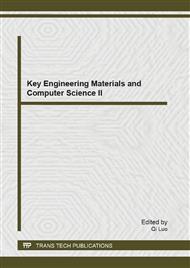p.170
p.177
p.184
p.188
p.194
p.200
p.205
p.210
p.215
Slurry Erosion Model for Wear Performance Prediction of Tool Steel
Abstract:
Erosive wear is one of the major failure modes in metal and plastic injection moulding. Certain regions such as gate, runner and some areas on the cavity wall, are particularly susceptible to erosive wear damage, leading to the reduction in the mould lifetime. Several parameters such as pressure, injection velocity, melting temperature, including various contaminants during material processing, have influenced to decrease the surface quality of the mould. Hence, the wear test and prediction are necessary information for the life extension of the mould material, and were carried out in present work. This work therefore aims to determine slurry erosion wear behaviour of the mould material, and presents a new semi-empirical approach to estimate the wear coefficient of material itself as a function of impact angles via an erosion test apparatus. It was found that the maximum wear coefficient of the tool material is around ~ 2.51 x 10-7 at the impact angle of 60o. While that the minimum value was found to be ~ 4.70 x 10-8 at the angle of impingement of 30o. Therefore, the effect of the different angle of impact on the impact energy, can also represent the failure modes in the tool steel material as ductile failures.
Info:
Periodical:
Pages:
194-199
Citation:
Online since:
July 2013
Authors:
Keywords:
Price:
Сopyright:
© 2013 Trans Tech Publications Ltd. All Rights Reserved
Share:
Citation:


